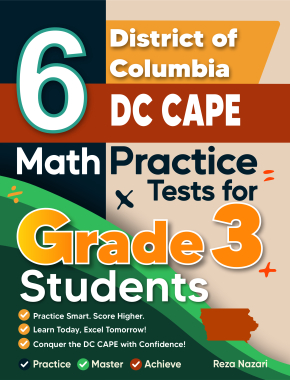Absolute vs Conditional Convergence: Key Differences Explained

Absolute and Conditional Convergence are two concepts that describe different behaviors of a series. Check out online math resources for more practice.
Absolute convergence occurs when the series formed by taking the absolute values of the terms converges. In other words, if \(\sum a_n\) converges absolutely, then the series \(\sum |a_n|\) also converges. A convergent series is always convergent, regardless of the arrangement of its terms. This type of convergence is more “stable,” as the behavior of the series does not depend on the signs of the terms.
Conditional convergence, on the other hand, happens when the series itself converges, but the series of the absolute values of its terms does not. This typically occurs in series with alternating positive and negative terms, like the alternating harmonic series. In this case, while the series \(\sum a_n\) converges, the series \(\sum |a_n|\) diverges. This convergence relies on the specific pattern or arrangement of terms (alternating signs) to ensure the sum approaches a finite value.
In summary, absolute convergence is a stronger condition, ensuring the series converges regardless of term signs, while conditional convergence relies on the alternating nature of the series and can fail if the terms are not arranged correctly. Understanding both is crucial for analyzing the convergence behavior of infinite series.
Here are two examples demonstrating absolute convergence and conditional convergence:
1. Absolute Convergence Example:
Series: \(\sum_{n=1}^{\infty} \frac{(-1)^n}{n^3}\)
- The series is a p-series with \(p = 3\), which converges.
- The series of absolute values is \(\sum_{n=1}^{\infty} \frac{1}{n^3}\), a p-series with \(p = 3\), which also converges.
- Since both the original series and the series of absolute values converge, the series converges absolutely.
2. Conditional Convergence Example:
Series: \(\sum_{n=1}^{\infty} \frac{(-1)^n}{\sqrt{n}}\)
- The series alternates in sign and is known as the alternating series with terms \(\frac{1}{\sqrt{n}}\).
- The Alternating Series Test shows that the series converges because the terms decrease and approach zero.
- However, the series of absolute values \(\sum_{n=1}^{\infty} \frac{1}{\sqrt{n}}\) is a p-series with \(p = \frac{1}{2}\), which diverges.
- Since the original series converges but the series of absolute values diverges, the series converges conditionally.
These examples highlight the distinction between absolute and conditional convergence.
Frequently Asked Questions
How do I help my child prepare for the math test?
To help your child prepare for a math test, focus on reinforcing their understanding of key concepts and problem-solving techniques. If your child is learning about series and convergence, such as absolute and conditional convergence, use practical examples to illustrate these ideas, showing how they apply in different mathematical scenarios. Additionally, practice is crucial, so consider incorporating Worksheets to provide your child with ample problems to solve, enhancing both speed and accuracy. For younger students or to foster a love for mathematics early on, explore resources like Top 10 Grade 3 Math Books Inspiring Young Mathematicians To Explore to find engaging materials that make learning fun and effective.
What are the best study strategies for math tests?
To effectively prepare for math tests, especially when studying complex topics like absolute and conditional convergence, it’s crucial to use a variety of resources and practice consistently. One effective strategy is to integrate both reading and problem-solving. Begin by understanding the theory, as explained in your study material, and then apply this knowledge by working through relevant Worksheets. Additionally, incorporating books that cater to different learning stages can enhance understanding and retention; for younger students, consider exploring resources like the Top 10 Grade 3 Math Books Inspiring Young Mathematicians To Explore. Regular review and practice are key, ensuring you tackle a variety of problems to build both depth and flexibility in your mathematical thinking.
How do you add and subtract mixed fractions?
To add or subtract mixed fractions, first convert each mixed fraction into an improper fraction by multiplying the whole number by the denominator and adding the numerator to the result. This sum then becomes the new numerator while the denominator remains the same. Once all mixed fractions are converted, you can easily add or subtract them by finding a common denominator and adjusting the numerators accordingly. After performing the arithmetic, if the result is an improper fraction, you may convert it back to a mixed fraction for simplicity. Understanding these steps ensures that you tackle problems involving fractions, much like understanding absolute and conditional convergence helps in analyzing series in mathematics. For more detailed instructions and examples, you can check out how to add and subtract fractions.
Related to This Article
More math articles
- How to Solve Theoretical Probability?
- How to Graph Quadratic Inequalities? (+FREE Worksheet!)
- How to Find Modulus (Absolute Value) and Argument (Angle) of Complex Numbers?
- Unlock Your Potential: “HiSET Math for Beginners” Comprehensive Guide
- Algebra Puzzle – Challenge 55
- 8th Grade TCAP Math Worksheets: FREE & Printable
- The Ultimate PSAT 8/9 Math Course (+FREE Worksheets)
- How to Graph Trigonometric Functions?
- 4th Grade WY-TOPP Math Worksheets: FREE & Printable
- Tips for Making Math Study Sessions More Productive


























What people say about "Absolute vs Conditional Convergence: Key Differences Explained - Effortless Math: We Help Students Learn to LOVE Mathematics"?
No one replied yet.